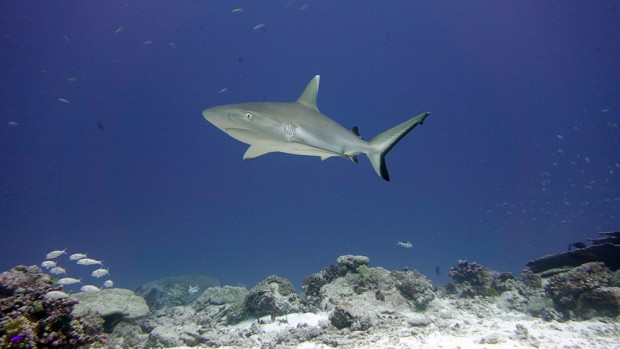2015 Darwin Science Expedition - Day 24 Last day out in the outer islands
VIDEO https://www.youtube.com/watch?time_continue=4&v=qfFiTHNpRP4
The final day on board the research vessel in the outer islands of the Chagos Archipelago. We set sail in the early hours of the morning, the engine throb rousing in the dark early morning before sunrise. A steady 2 hour cruise will take us south of Danger Island, across a short stretch of open ocean and on to Egmont Atoll.
A stiff north westerly breeze has lifted the swell from that direction and it’s a rolling cruise down before we anchor off with windy and choppy conditions to welcome us for our day’s activities.
I head ashore with the shore party to Ile Sud Est. I’m looking for elasmobranch satellite tags that have floated off their host and drifted ashore to the lagoon side of this island. Pete and Tom head off around the island doing their bird and island survey work.
Whilst we are on island the others have been out diving. For some a particularly sharky occasion with several Grey Reef Sharks circling close as they carried out their work. This will be the last dive for many on this expedition as work wraps up before we start packing for the journey home.

While we contemplate this it is a good occasion for me to pass you over to Pete for his last write up on terrestrial activities for this expedition.
The Egmont Islands
The final day at sea saw us sailing early from Danger Island south to the Egmont Islands. The Egmonts are also known as The Six Islands, though this label no longer holds true. Through accretion the six islands are now two large islands. Some seven years ago a sand bar was developing between these two new islands and looked as though it was going to finally join all of the islands together though this has not happened. Instead, channels have broken through the sand bar and a small island, with Scaevola growing on it has formed in the channel between the two complexes. It was here on this only rat-free ground in the Egmonts that I found my first colony of breeding Crested Terns. These nomadic, non-seasonal breeders (in the Chagos at least) can and do nest on rat-infested islands but have opted to nest without rat-hassle on this isolated feature.

Red-footed Booby are still maintaining a breeding presence on the Ile Sudest complex with some eight pairs nesting during this visit in the relict coastal hardwoods of Iles Tattamucca and Carre Pate. Sadly, due to the rats and the loss of over 90% of the original vegetation little else thrives on land in these islands.
As ever, underwater, life appeared to be teeming and again, even after walking the shores of Chagos islands for several years, something new turned up to delight and intrigue me. I had always been under the impression that sea snakes were not to be found in the central Indian Ocean and that there had never been a positive sighting of one in the Chagos Archipelago. So imagine my surprise (shock may be a more accurate term) when as I waded through the shallows looking up in to the coastal trees looking for booby nests, I saw a black banded yellow snake-like creature stalking the cracks and crevices of the shoreline.

Being mildly ignorant of sea snakes and assuming they are all highly poisonous and aggressive, discretion took the best part of valour and I beat a hasty retreat to terra firma, but not before snapping a distant photograph and watching this creature swim directly in to the sand! As I walked the remainder of the survey route I pondered further over this enigmatic creature. Sea snakes had never occurred in the Chagos, I had never heard of snakes swimming directly in to the substrate, this beast had appeared headless….things were not adding up. But, to the amusement of my more ichthyological minded comrades on the ship I blurted out that I had had a near miss with a highly venomous sea monster, to which they showed me a picture of the harmless Banded Snake-eel and advised I “Stay Calm and Carry On Birding”.

